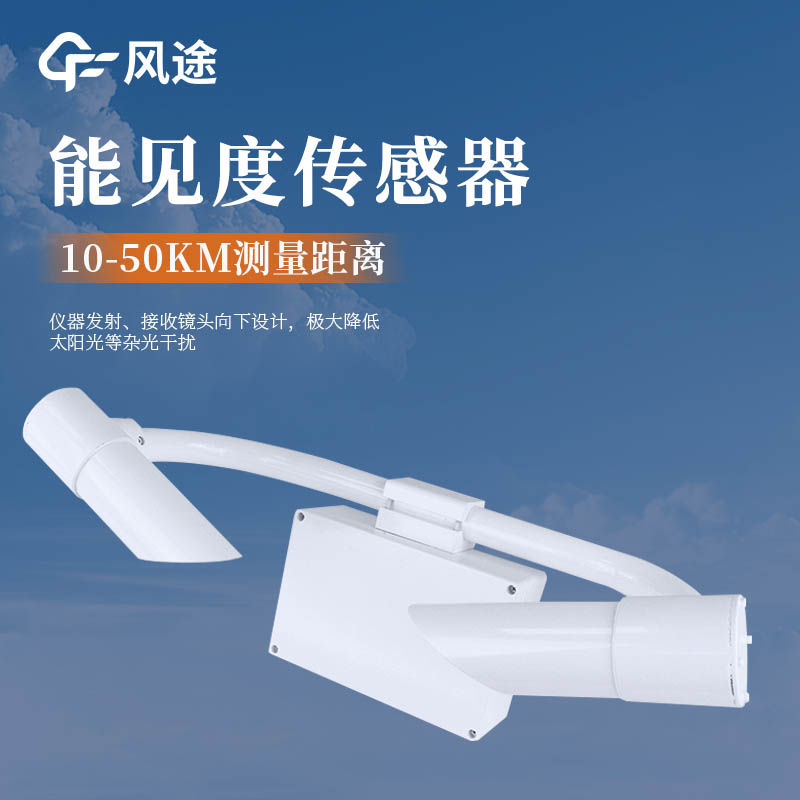Shandong Fengtu IOT Technology Co., Ltd
Sales Manager:Ms. Emily Wang
Cel,Whatsapp,Wechat:+86 15898932201
Email:info@fengtutec.com
Add:No. 155 Optoelectronic Industry Accelerator, Gaoxin District, Weifang, Shandong, China

Sales Manager:Ms. Emily Wang
Cel,Whatsapp,Wechat:+86 15898932201
Email:info@fengtutec.com
Add:No. 155 Optoelectronic Industry Accelerator, Gaoxin District, Weifang, Shandong, China
time:2025-05-22 08:52:40 source:Weather Station viewed:177 time
A scattering-type visibility sensor is an instrument that estimates visibility by measuring the intensity of scattered light in the atmosphere. It is based on three assumptions: the atmosphere is homogeneous, the extinction coefficient is equal to the scattering coefficient, and the scattered light intensity is proportional to the scattering coefficient. During operation, the transmitting end emits light radiation to irradiate the atmosphere in the sampling space. Aerosol particles in the atmosphere scatter the light. The scattered light intensity is related to the particle concentration and size, which in turn can reflect the atmospheric visibility. By measuring the scattered light intensity at a specific angle, the total scattering coefficient is determined, and the visibility is calculated.
According to different scattering angles, scattering-type visibility sensors can be divided into forward scattering visibility sensors and backward scattering visibility sensors.
For the forward scattering visibility sensor, the transmitter and receiver form a certain angle and distance, and the receiver can only receive the forward scattered light from the atmosphere. Its transmitter typically uses an infrared LED as the light source, which is irradiated onto the sampling space after being passed through a lens and pulse modulation. Aerosol particles in the sampling space scatter the light, and the scattered light is filtered by a filter and then detected by the receiver as a forward scattering signal. The total scattering coefficient is determined based on the relationship between the scattering signal at a certain angle and the total scattering amount, and then the CPU converts it into a visibility value through a special algorithm. It has the advantages of small influence of lens contamination on its measurement effect, wide detection range, compact structure, easy adjustment, small volume, high performance-price ratio, and wide application. However, its sampling volume is not large, which may take a point as a substitute for the surface, and using the scattering coefficient in a certain angular direction to replace the total scattering coefficient will introduce relative errors.
The backward scattering visibility sensor mainly adopts backward scattering technology. Its transmission and reception share one optical system. Through the laser-emitted backward scattering measurement method, it can in-situ measure optical parameters such as the density, distribution function, and extinction coefficient of aerosols to obtain visibility values. Its advantages include no need for a cooperative target, sufficient sampling space, the ability to truly reflect the atmospheric conditions in the measurement area, and the ability to obtain visibility information in different areas on the measurement path.

During the highway construction process, various types of pollution will be generated, among which PM pollution is particularly prominent. In the operations of earthwork filling and excavation, transportation and mixing of road construction materials, asphalt heating and mixing, paving during the pa...
Portable Weather Station is a highly integrated, portable, and rapidly deployable automatic weather observation device. It incorporates sensors, a data logger, a power supply system, and a communication module into a compact housing or mast. Its core features can be summarized as "portable, rap...
A Portable Weather Station for firefighting is a lightweight and multi-functional weather monitoring device specially designed for fire rescue scenarios. It is mainly used to monitor the meteorological conditions at the fire scene in real-time, helping firefighters assess the development trend of th...
The Atmospheric electric field meter is a scientific instrument specifically designed to measure atmospheric electric field strength and its variations. Its measurement range covers -100 kV/m to 100 kV/m. This device provides early warning of lightning activity by monitoring changes in the atmospheric electric field in real time. It has significant application value in aerospace, national defense, smart grids, petrochemicals, and meteorological observation, providing data support for disaster prevention and safe production....